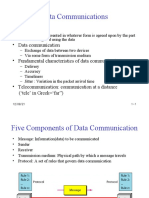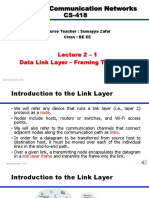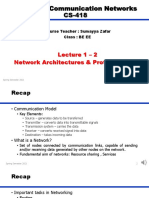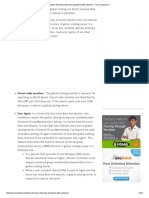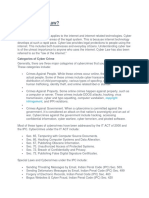0% found this document useful (0 votes)
116 views33 pagesComputer Communication Networks CS-418: Lecture 1 - 1
This document provides an overview of the Computer Communication Networks course taught by Sumayya Zafar. It outlines the course topics which include data link layer, local area networks, network layer protocols, and transport layer. It also lists the learning resources, evaluation criteria, course objectives and outcomes. The document introduces important concepts in computer networking such as network topologies, communication patterns, and network coverage areas.
Uploaded by
Ali MemonCopyright
© © All Rights Reserved
We take content rights seriously. If you suspect this is your content, claim it here.
Available Formats
Download as PDF, TXT or read online on Scribd
0% found this document useful (0 votes)
116 views33 pagesComputer Communication Networks CS-418: Lecture 1 - 1
This document provides an overview of the Computer Communication Networks course taught by Sumayya Zafar. It outlines the course topics which include data link layer, local area networks, network layer protocols, and transport layer. It also lists the learning resources, evaluation criteria, course objectives and outcomes. The document introduces important concepts in computer networking such as network topologies, communication patterns, and network coverage areas.
Uploaded by
Ali MemonCopyright
© © All Rights Reserved
We take content rights seriously. If you suspect this is your content, claim it here.
Available Formats
Download as PDF, TXT or read online on Scribd
/ 33






































